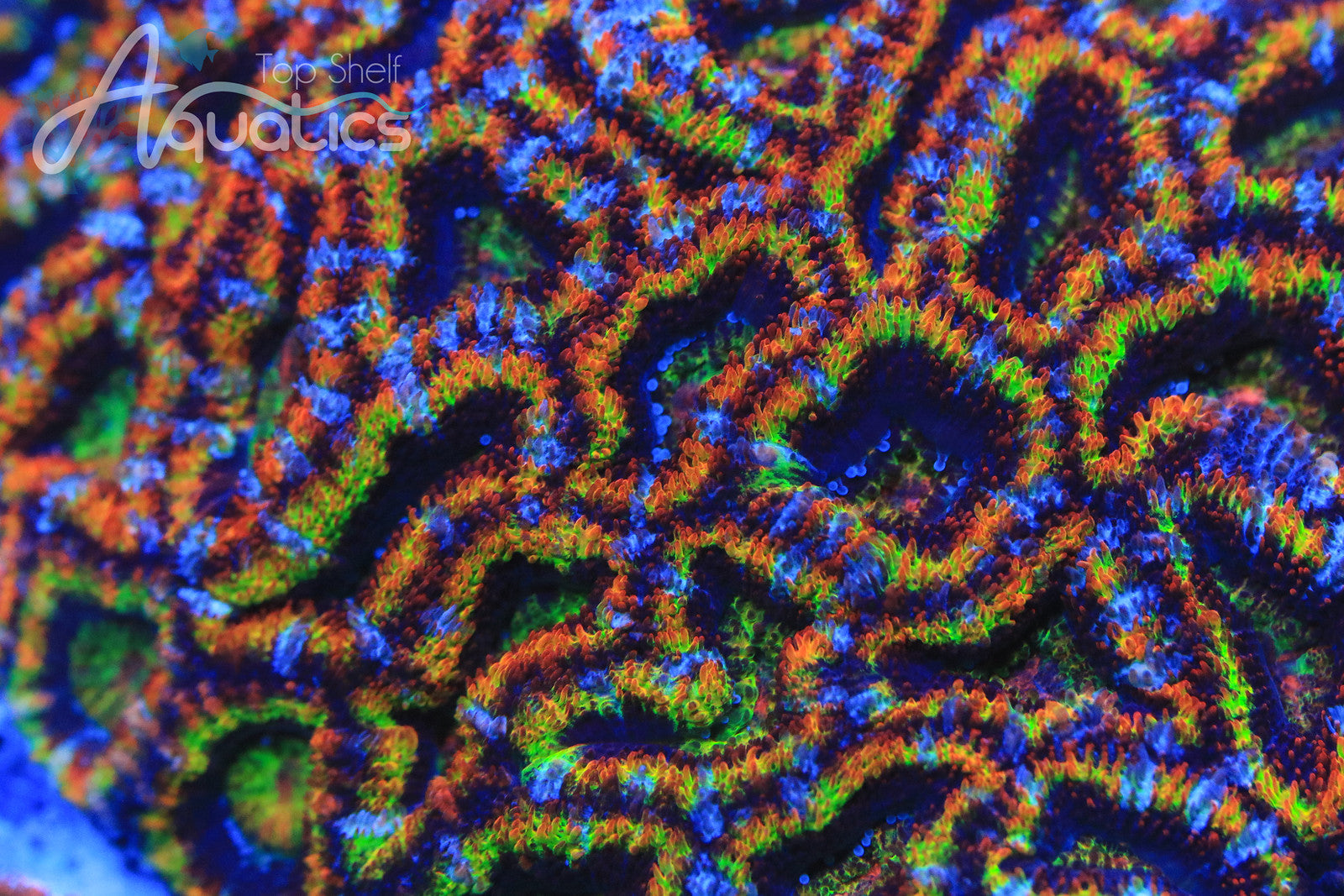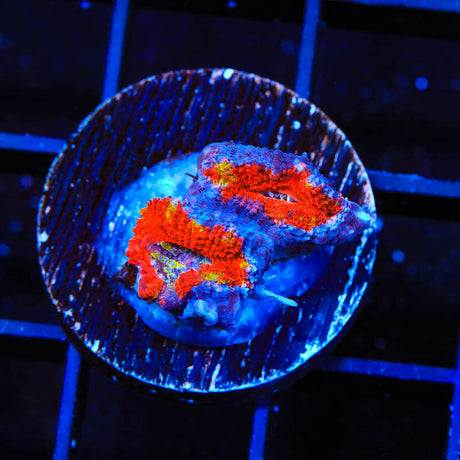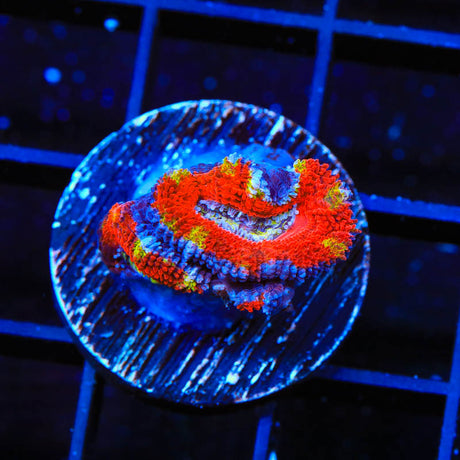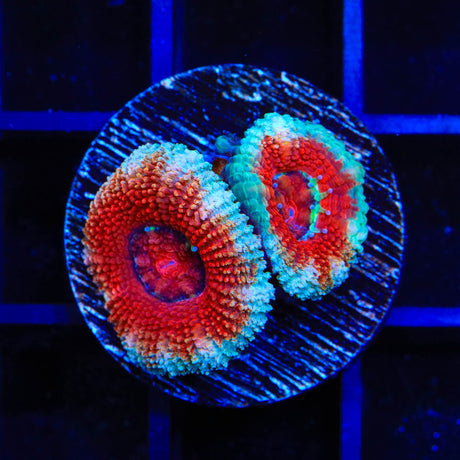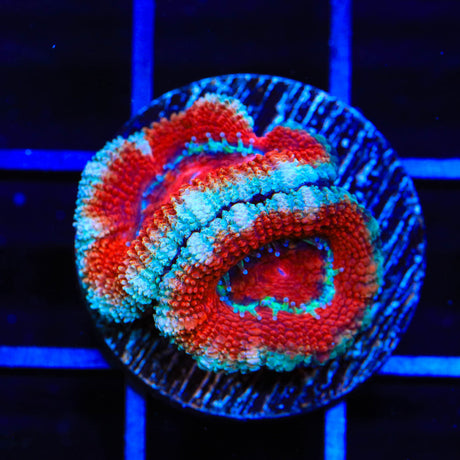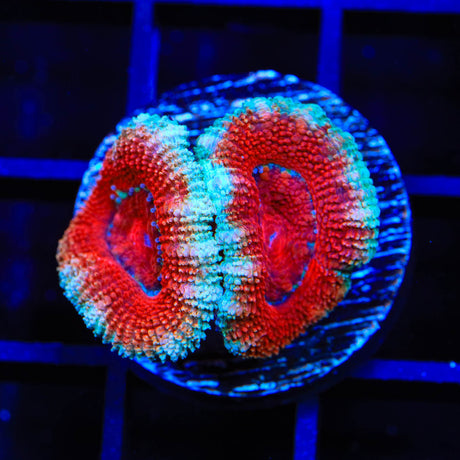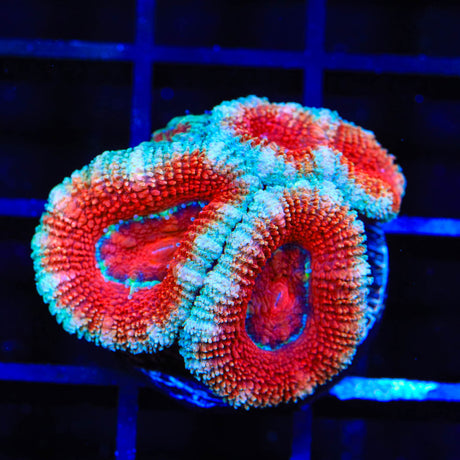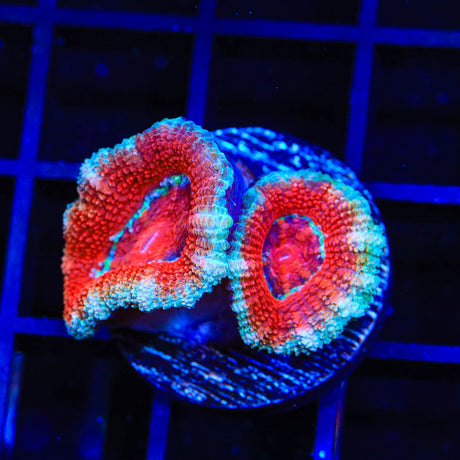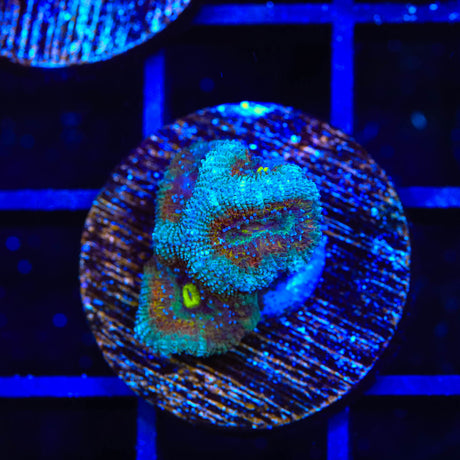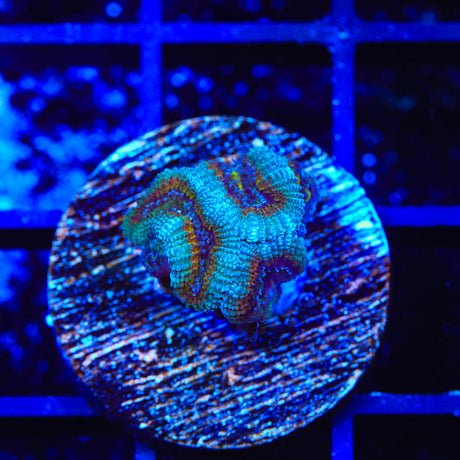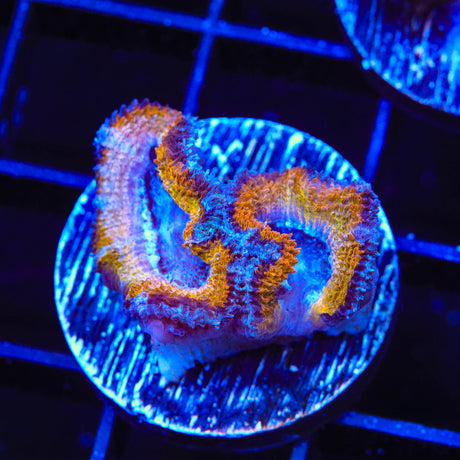Acanthastrea/Micromussa
Micromussa is a coral staple in the world of reef-keeping. Even though you will often hear them referred to as Acanthastrea (or “Acans” for short), Micromussas were reclassified in 2016.
The two most common species typically seen among reef-aquarium hobbyists are the Micromussa Lordhowensis and Micromussa Amakusensis, abbreviated to lords and micros. The main visual difference between these two species is the polyp size. The Micromussa Lordhowenis has polyps that are much larger in comparison to Micromussa Amakusensis.
Micromussa Coral Care
Micromussa does best in a low-light environment. Intense lighting is known to morph the color of the Micromussa, producing a dominant red or orange coloration. A stronger blue light spectrum can help prevent rainbow varieties from color morphing.
Place your Micromussa on the sand bed or in the lower to mid-portion of your aquarium. You want to ensure these corals are provided with just enough flow, preventing debris and detritus from settling on them.
Tentacle extension indicates your coral’s desire to capture food. Micromussa eagerly consumes any food they can trap with their tentacles. They benefit from target feeding and enjoy meaty frozen foods as well as small digestible pellets. This promotes new polyp development and faster growth. At Top Shelf Aquatics, we see the best results using a mixture of PE Mysis, Fauna Marin LPS Pellets and Benepets.
Add a Micromussa Garden to Your Reef Aquarium
Micromussa corals are a great addition to your reef aquarium because of their less demanding care requirements and the vast variety of colorations and patterns. Making them highly desirable and collected by hobbyists of all experience levels.
A creative way to display your Micromussas is to create a small island or “garden” of just this species. The multitude of colors and patterns will create a jaw-dropping centerpiece.

